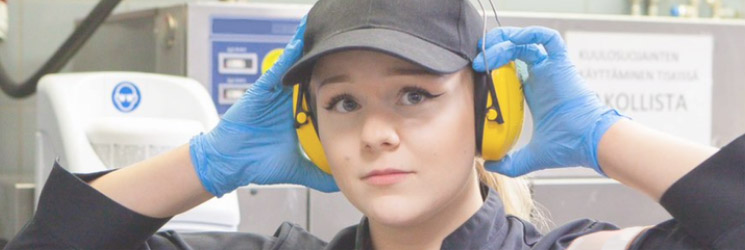

Working conditions
Labelling of chemical substances and mixtures
Substances and mixtures must be classified and labelled according to the CLP Regulation (Regulation (EC) No 1272/2008 on classification, labelling and packaging of substances and mixtures) so that the labels of substances and mixtures include hazard pictograms, signal words, hazard statements (H) and precautionary statements (P).
Due to long transitional periods, some workplaces may still have substances and mixtures that have been labelled according to previous legislation. Chemicals labelled according to previous legislation may have been available on the market up to 2017.
Hazard pictograms should be accompanied by a signal word. Signal words are words used to indicate the level of severity of the hazard. The signal word ‘Danger’ is used for the most severe risk categories, whereas the word ‘Warning’ is used to refer to less severe risks.
Further information in Finnish: Hazard pictograms for chemicals. The Finnish Safety and Chemicals Agency (Tukes).
Health hazards
The CLP regulation identifies ten different classes for health hazards, and these classes are divided into different categories. Part 3 of Annex 1 to the regulation contains the criteria for how chemicals are classified based on their health hazards.
Health hazard classes:
1. acute toxicity (oral and dermal, inhalation)
2. skin corrosivity/irritation
3. severe eye damage/irritation
4. sensitising (respiratory tract, skin)
5. genetic defects to gametes
6. cancer hazard
7. hazard to reproduction
8. + 9. specific target organ toxicity (STOT): single and repeat exposure
10. aspiration hazard
Labelling of tanks and pipes
The employer must equip chemical containers and tanks with appropriate labels (trade name and required warning and safety signs) and equip chemical pipelines with appropriate markings (contents and flow direction).
In addition, the employer shall indicate with an appropriate warning sign the premises, rooms and fenced areas where significant quantities of dangerous substances or mixtures are stored. The warning sign must be placed near the storage area or on the door leading to the storage room.
Labelling of chemicals
The employer must ensure that the labelling on hazardous chemicals, biocidal products and plant protection products is written in Finnish and in Swedish. Where chemicals are stored in non-original packaging, the packaging must bear the corresponding hazard markings (label information or at least the trade name and warning signs). If the hazard markings cannot be securely attached to plastic containers, one option is to use colour-coded containers with information visible at the filling site.

